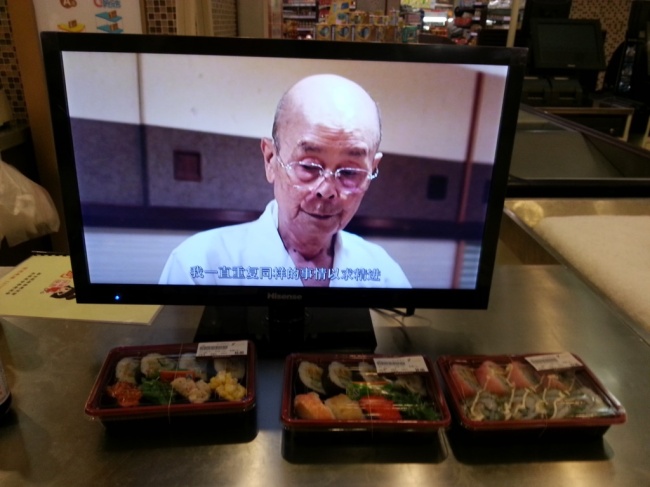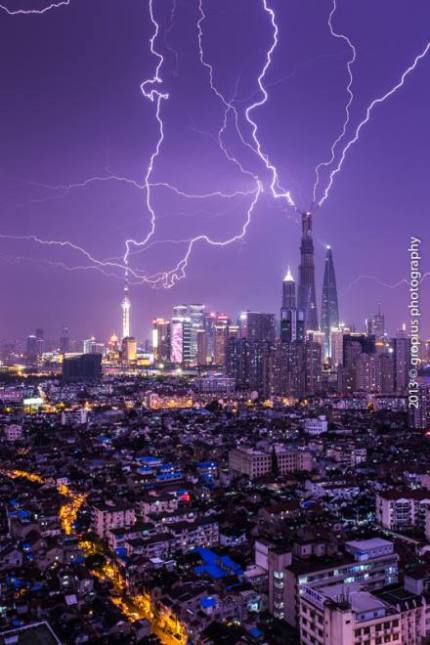Last week was China’s Mid-Autumn Festival, and the government gave us Thursday and Friday off. It would have been a four-day weekend, but the government made us do a make-up day on Sunday, meaning we pay for our three-day weekend with a six-day workweek. Can’t win them all.
My roommate and I spent the three days in Hefei, capital of Anhui Province. Hefei is one of China’s smaller and less famous provincial capitals. despite being just a short distance from Nanjing and other glittering cities of the coastal regions, Hefei is just inland enough to feel a world away. We caught the bullet train there in three hours.
First impression at getting off the bullet train: on the other side of the platform was one of the oldest trains I had ever seen. Full of rusted, boxy green cars, of the kind I haven’t ridden in years. The new bullet trains are all sleek and white. These green ones go much slower and are decidedly less comfortable inside – I presume they are being phased out slowly. This one was on its way to Dongguan, hundreds of miles to the south in Guangdong Province. What a long way to go…
Second impression of Hefei: It was hot as hell. After stashing our bags at a hotel, we walked around for a bit, grew horribly sweaty, and dipped into a mall to wait out the heat. We ate ice cream next to an underground supermarket, which had set up kiosk to sell pre-made sushi near the entrance. They were playing the documentary <Jiro Dreams of Sushi> on a TV next to the sushi. The movie is about one of Japan’s greatest living sushi masters, full of slow-motion shots of expert hands molding mouth-watering, translucent strips of fish onto secret-recipe rice. The juxtaposition did not serve the supermarket sushi well. Advertising fail.
With temperatures coming down in the late afternoon, we ventured out and stumbled into a bustling city park full of families on picnics and kids tugging parents’ sleeves to try out an entire amusement park’s worth of rides. The coolest part was a raised track winding through the park, on which were attached giant wheels that people could peddle themselves along on. The falling danger alone probably would have had the thing torn down in the US on fear of lawsuits, but it looked kind of fun.
On Day 2 we paid a visit to the China University of Science and Technology (CUST). It’s one of China’s top technical schools, and something of an odd fit for Hefei since most of China’s best universities concentrate in its biggest cities. CUST is known for having a special training center for gifted children, where child prodigies from all over the country are gathered together to hone their skills and then venture out to conquer various fields. We were hoping to lay eyes on a few of the baby geniuses ourselves, but unfortunately the campus was mostly quiet owing to the holiday. We did stumble upon the prodigies’ probable training building, though, at the School for Gifted Youth.
Class photos of the program’s first years in the 1970s. Beside this was a “Where are they now” poster showing all the famous universities where they studied PhDs or now taught, as well as the various international awards and accolades receive (including a MacArthur genius grant or two).
We spent the afternoon of Day 2 at the Anhui Provincial Museum. The downtown museum seemed a little threadbare – my old Lonely Planet from 2007 said it was under renovation and I had been expecting by now for there to be a little more of a shine to it. Later I heard that they had built a new branch of the museum a few miles away in Hefei’s purpose-built new downtown – maybe all of the best exhibits had migrated there.
One exception was a thorough exhibition of the works of Pan Yuliang, an Anhui native and artist whose tumultuous life led from abandonment and prostitution as a child to international acclaim drawing and painting in Paris. That’s her in the middle of the picture below.
Most of the works on display were line drawings of nude women with thighs almost as thick as their waists. The attendants in that room were serious about the no photography rules, but in other galleries they were more lax. I developed a soft spot for the paintings of women in late Qing dynasty dress, a style I still remember clearly from my senior thesis research.
And finally, a self-portrait of the artist herself, brow furrowed in a way not dissimilar from her photos.


















